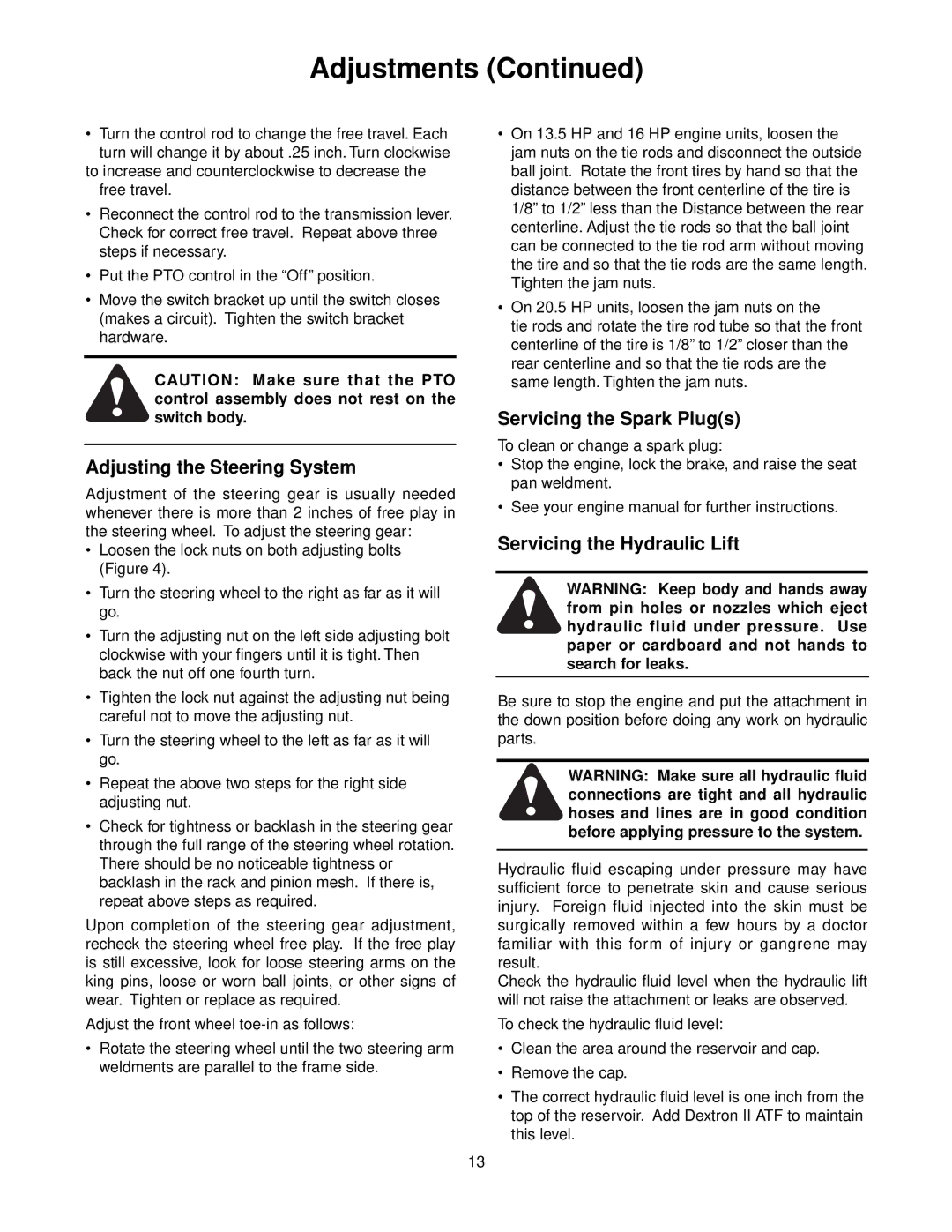070 - Professional G, 071 - Professional G, 072 - Professional G specifications
Ariens has long been a recognized name in the outdoor power equipment industry, particularly in the realm of snow removal. Among its impressive lineup is the Professional G series, which includes the Ariens 070, 071, and 072 models. Designed for demanding commercial and residential applications, these machines are built for durability, efficiency, and ease of use.The Ariens 070 Professional G features a powerful engine designed to tackle the toughest snow conditions. With its robust 420cc engine, this model is capable of producing substantial torque for efficient snow clearing. It includes a 24-inch clearing width and a 21-inch intake height, making it suitable for deep snowfall while allowing for quick and efficient passes. The heavy-duty construction of the 070 ensures that it can withstand rigorous use, maximizing its lifespan and reliability.
Moving on to the Ariens 071 Professional G, this model takes performance up a notch with a larger 24-inch clearing width. It also features a comprehensive 12-inch impeller that enhances the snow discharge distance, allowing users to throw snow further away from their clearing path. With increased handling capabilities, the 071’s enhanced friction disc drive system offers improved control and traction on slippery surfaces. This model is ideal for those who frequently encounter heavy or wet snow.
The Ariens 072 Professional G is the flagship of the series, boasting advanced features tailored for professional-grade performance. It is equipped with a 420cc engine and incorporates Ariens' patented Auto-Turn technology, which enables seamless maneuverability. This model also comes with premium functionalities such as an adjustable drift cutters and a remote chute rotation control, giving users the ability to direct snow discharge from the operator's station, maximizing control during operation.
All three models feature heavy-duty steel frames and reinforced impellers for increased durability and reduced wear over time. Ergonomic controls and adjustable handle heights make these models user-friendly, allowing operators to work efficiently without unnecessary strain. Moreover, these snow blowers feature larger tires for improved traction in all types of snow conditions, making them an excellent choice for winter maintenance tasks.
In summary, the Ariens 070, 071, and 072 Professional G models exemplify the brand's commitment to quality and performance. With their powerful engines, user-friendly designs, and advanced snow-clearing technologies, these snow blowers are primed to tackle everything from light dustings to heavy winter storms, meeting the needs of both professional landscapers and homeowners alike.

